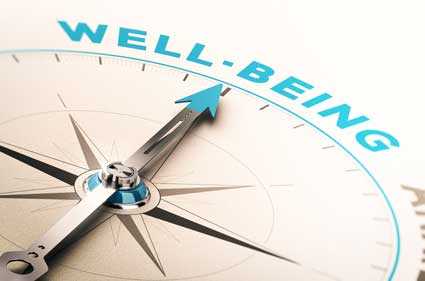Due to the major under-diagnosing of concussions, the exact number of concussions per year is not known, but it is in the millions for the United States alone. Great varieties of causes are responsible for this high number of mild traumatic brain injuries, but some of the leading causes are sports, automobile accidents, and falls. Take a closer look at how some of these various areas of life present risks of concussions to all generations. The wide range of possibilities for causes is one reason why concussions are so prevalent and common, yet so under-diagnosed.
Automobile Accidents
Keep in mind that it does not have to be a severe car wreck to cause an injury. It doesn't even require a blow to the head to initiate a concussion, as this injury can be caused by a simple jolt. A bump from the car behind you could cause you to lurch forward, and this simple motion can cause a mild brain injury, even if you were wearing your seatbelt at the time and feel fine. Since this is such a subtle way to get a concussion, it's not hard to understand why so many people might not believe they have even been injured. This leads to them going about their daily life without the knowledge that they have had a brain injury from such a simple event.
This is not some visible injury like a broken arm or bleeding scrape, so in a minor car accident, the person with the concussion might not even realize they have been injured.
Car accidents where there is no impact or blow to the head often leave the passengers believing they couldn't possibly have a concussion. A concussion is so often tied to the idea that it requires a severe blow to the head, and many people remain unaware that a simple jolt could produce the same damage. If symptoms don't flare up immediately, but instead take a couple days to manifest, then this unawareness could continue and the concussion might remain undiagnosed.
No matter the type of car accident, whether it involves a full-impact injury or just a quick jolt, the passengers should always be aware of the symptoms they should look out for. An explanation of what to do should these develop.
Falling
Despite the attention that sports-related injuries or automobile accidents get, those two causes are not nearly as prevalent as a simple fall. In fact, falling is the leading cause of concussions in the United States. Falling makes up over half of the traumatic brain injuries in young children, since they are not yet steady on their feet. A person doesn't have to be playing a sport or driving a car to experience a fall, and people of all ages and sizes can be hurt from a fall. Since this type of injury is an unpredictable accident, it's not as though you can work towards prevention of it, like you might by taking a break from sports or from driving. Once you have experienced a first concussion, rest is the best option to prevent from falling and hurting yourself again.
All it takes is a wrong step, slipping on something wet, or accidentally being knocked over, and before you can stop it, you hit your head on something or jolt it hard enough to cause a concussion. Falling can happen at any age, but it is particularly prevalent for elderly individuals who may have difficulty getting out of bed or doing certain tasks. Always keep your own safety in mind and ask for help if you need it, rather than risking the effects of a concussion. If you or somebody you know does experience a fall, don't just disregard it because there are no outward signs or immediate symptoms. The symptoms could take a couple days to manifest, and when they do, you may have already forgotten and disregarded that simple fall you had a few days back.
Contact Sports
Although this cause is not the most common of all causes, it has received the most attention over the last couple decades. Awareness began to grow as research was developed in regards to the brain injuries that boxers suffer from repeated blows to the head. Currently, questions are being raised about full-impact sports like football and the permanent damage that multiple hits might have on the young sports players. Since it is such a serious topic that affects the lives of so many who play contact sports, you don't have to look far to find an abundance of articles, books, documentaries, or movies on the topic. While falling and car accidents are often unpreventable and unpredictable, the issue with contact sports is that it is a willing choice to put yourself at risk, so the question is being raised about how these sports can be made safer for the participants.
For young athletes participating in a school sport, it's important that their coaches take seriously the risks of concussions and instruct their athletes on the symptoms to watch out for. If any of the young athletes experience a concussion, the appropriate steps towards recovery should be taken before putting them back into the game. One problem that arises is the disregard of concussions for fear of losing a star player, but the health of the player's brain should be the key priority. Concussions can occur in nearly any sport, but a particular focused has been placed on football and the high-impact hits that the players suffer from. The helmets worn in football can't keep the brain from hitting the skull, which is exactly what happens in a concussion, so there is no way to prevent the blows and jolts from giving players concussions.
Since the protective gear that athletes wear doesn't do anything to prevent concussions, the primary focus is on raising awareness and encouraging players to report their symptoms. As the competition reaches higher levels, such as the NFL, the conversation gets a little trickier. Coaches and teams don't want to just take their best players out of the game, and players frequently under-report their symptoms for fear of being taken out of the game. Continuing to play, however, only prolongs the time it would take to heal fully and also puts the player at risk for further damage to the brain.
The NFL has paired up with the Center for Disease Control and Prevention (CDC) to help raise awareness of the symptoms of a concussion, and help athletes learn to spot potential brain injuries based on the signs that the injured person displays.
Other Recreational Activities
Throughout your ordinary, everyday routine, you will find that there are many potential concussions just waiting to happen, depending on the right circumstances. Countless recreational activities or daily habits could lead to a concussion if something goes just a bit wrong. All it really takes is a sudden acceleration or de-acceleration of the head, causing the brain to move even though the skull has stopped. This can be caused by a blow to the head or jerking motion.
So many things happen throughout a busy day that one simple accident or jolt might not register in your mind as important. A few days later, you might find that you are having trouble sleeping or can't quite get rid of that headache, but because the incident seemed so minor, you might not associate it with these developing symptoms. By raising awareness of what types of situations can cause concussions, people can learn to recognize situations that could potentially lead to a concussion. If they receive a blow or jolt to the head, instead of shaking it off because they feel fine, they can instead watch out for concussion-related symptoms over the next couple of days. Although accidents are unpreventable, awareness can aid in making sure that treatment is received and further damage is prevented.
The Actual Cause
While all of these potential situations are prevalent in discussion, it can be beneficial to tie the two together. In order to understand why contact sports or simple car accidents can present such a danger, it may be helpful to review what exactly happens to the brain. Regarding a car accident, just imagine what the brain might be doing inside the skull if there is a sudden halt. Just that brief, simple jolt of the car can affect the brain.
It might be easier to imagine the damage occurring in a contact sport like football, where you see players get knocked to the ground time after time. While their helmet protects the outside of their head, what is protecting the brain from hitting the skull? The answer is quite simple: nothing. You can then understand why concussions are so frequent and difficult to prevent in such a high contact sport, despite all of the safety regulations and gear.
All of this is not to say that certain precautions can't be taken to prevent concussions as much as possible, since there are certain safety measures people can take to protect themselves and their families.
Risk Factors
As with any injury or damage to the human body, there are prevalent risk factors that should be addressed when regarding a concussion. Friends and family members of an individual suffering from a concussion, as well as the hurt person themselves, should all be aware of the potential for further harm or development of symptoms.
Risks for Older Adults
For older individuals, concussion symptoms are often misdiagnosed or missed altogether, so if you know an elderly adult who has recently had a fall, stay alert for signs of a concussion. Older adults may have higher risk of having more serious consequences from a concussion, with complications such as bleeding on the brain. One symptom that can be an indicator of this complication would be a headache that doesn't go away. If an older adult has trouble getting out of bed or walking up and down stairs, these could be significant risk factors for a fall. If an older individual does fall and experience a head injury, the best recovery will be for them to rest and avoid any situations like the one that led them to fall, until they are fully recovered. Even after recovery, if falling seems to be a frequent issue, it may be best to find a more suitable situation such as a house with no stairs or a caretaker to help them out daily. These steps should be taken in order to help avoid any further injury.
Risks for Young Children
Young children are always playing around or doing something active, so the risks of falling and bumping their head are pretty high. From falling off a bike to getting hit in the head with a ball or toy, there are various ways in which a child's lifestyle can cause a head injury. The risk factor for young children with brain injuries, however, is the developmental stage that their brain is currently in. Since they have not fully developed yet, any brain damage at this age could be concerning to their growth.
Most of the injuries that children suffer are caused by accidents, and proper safety measures can be taken to prevent as many of these injuries as possible. Proper use of child car seats and seat belts can reduce risk of injury in minor or major car accidents. When riding a bike or scooter, helmets can protect the child's head from severe injury, although in the event of a concussion there is nothing that a helmet can do to prevent it. Since a concussion is an internal injury, the helmet doesn't do anything about that, but rather protects the outside of the head instead.
If a child is injured with a concussion, it is up to their primary caregivers to make sure that they receive the right treatment and recover fully. Children may still want to run and play even after an injury, so it is up to the adult in the situation to enforce the rest that is necessary to recovery. Their young brains need help in maintaining healthy growth, since they don't know yet the proper way to care for their bodies and brains.
Risks for Athletes
Athletes of any age and competition level are at risk for concussions, since they are putting themselves into an environment where head injuries are likely to happen. Football, basketball, soccer, and any other contact sport all present risk of injury, which is just a chance that each athlete choices before joining the game. The risk that they should avoid, however, is the risk of receiving multiple concussions once they have already suffered from a single concussion. The risk of potential damage from multiple concussions can be severe. Athletes should take all the precautions necessary to prevent concussions, but most importantly, they should be aware of the signs and symptoms of this brain injury. If athletes and coaches are able to recognize a concussion when it happens, and are able to take precautionary measures, then further brain damage can be avoided.
For some athletes, this risk factor may be too huge for them to keep playing the sport. Many professional athletes have recently retired early due to the severe symptoms that come from multiple concussions. Younger athletes might find that the best route for them is to change up their athletic situation in order to avoid these risk factors, whether that means changing to a less violent sport or quitting athletics all together.
Risks for Prolonged Recovery
Nobody wants their recovery to be prolonged, but if the right steps aren't taken to ensure that the brain has the adequate time and nutrients to recover, then that person may be at risk for prolonging their recovery time. For athletes, these risks mean continuing to stay active and play contact sports even after a first concussion. As discussed above, the impact of a second concussion could be incredibly severe.
For non-athletes, even just maintaining their regular schedule could present some risk factors. The effects of a concussion slow down the abilities of the brain, and it takes more time and energy to complete ordinary tasks. By continuing with a full schedule and maintaining a busy lifestyle, the injured person can overwhelm their brain and not allow it the energy necessary to recovery. The doctor's recommendation for recovery from a concussion will be to rest, both physically and mentally.
Other factors have been speculated to play a role in the length of the recovery, such as age, sex, history of prior concussions, and mood disorders. Upon receiving a concussion, there is no definite answer to how long it will take to recover. A doctor might suggest a general period of time for an individual to rest, but depending on their body recovers, it may actually take longer than suggested. Each person who suffers a traumatic brain injury needs to be able to understand how their body is responding and treat it with care, so that they recover fully and don't face these more dangerous risk factors.
Risks with Medication
This is primarily applicable to older adults, since many elderly individuals take blood thinners for other medical reasons. However, this medication can make them more susceptible to bleeding on the brain if they bump their head. If an adult who takes a blood thinner has recently hit their head or had an accident, always get it checked out be a doctor just to make sure that there are no life-threatening or concerning consequences.
Risks in a Vehicle Crash
Being in a car accident of any type increases the risk of getting a concussion, and one should always check for symptoms no matter the severity of the impact. Even just a simple jolt can cause a mild concussion, and proper medical attention should be given to this brain injury. If there is an actual blunt force trauma, in which the head makes contact with the dashboard or any other part of the car, then scans should be run to ensure that there is no severe head injury beyond just a concussion.
For families with little children, the proper children car safety seats should be used to limit the amount of force to the head in the event of a car accident. One can reduce the risk factors in their car by wearing seatbelts and following all of the safety guidelines that come with driving a vehicle.
Risks in Attacks or Physical Assault
While other causes of concussions may take the spotlight in media and society, it is important to realize that physical assaults or abuse can also lead to brain injuries. Since these are such serious events, the injured person's mind may not be on their symptoms that they are experiencing, but rather on dealing with the event itself. It is necessary for the injured individual to make sure that their health is taken care of, although this may be a difficult step in cases of physical abuse. If somebody is aware that another person has received a head injury in an attack, they should do what they can to aid in getting medical assistance to the injured person. This is actually a very common cause of concussions, and it shouldn't be forgotten while the severity of sports injuries takes the spotlight.
Risks at Work
Certain occupations can even present more of a risk to workers, as they put them in situations where a concussion is a bigger possibility. People who work office jobs and sit behind a desk don't often have to worry about the possibility of a concussion, but those who work in warehouses or do manual labor may find this to be a more frequent problem. When treatment becomes necessary and the doctor's instructions are to rest, this can be difficult because most people can't just stop working and still pay the bills. This can put a lot of stress on the injured individual and their families, so it something that people in these types of jobs definitely need to be aware of. All efforts should be taken towards safety and precision, so that accidents are avoided as much as possible.
What Other Factors Put You More at Risk for a Concussion?
-
Genetics – Heredity has constantly been shown to play a role in a number of neurological disorders or problems. As far as concussions, further research is necessary to determine the exact correlation between genetics and concussions, but much has been hypothesized already. Many theorize that heredity can increase susceptibility and vulnerability to certain injuries, such as brain injuries.
-
Sex – Multiple studies show that women are more susceptible to concussions than men. In sports that both men and women compete in with the same rules, such as soccer, women have shown to have a higher occurrence of concussions.
-
Lifestyle – While nothing can prevent a freak accident from happening, your lifestyle can determine much about your brain's health. Your nutrition, exercise habits, sleep patterns, alcohol and drug use, and other factors all contribute to the health of your brain. These aspects also can play a role in the speed of recovery, so they are important to consider.
-
What Factors Put You More at Risk for Post-Concussion Syndrome? –What are some potential factors that could attribute to a person's development of this syndrome?
-
Age – Studies have shown that individuals 40 and up are more likely to struggle with post-concussion syndrome following their injury. Their brains may not be as quick to heal itself as it once was, due to the natural deterioration that begins to take place as people age.
-
Sex – More women are shown to be diagnosed with post-concussion syndrome, but this statistic could be swayed due to the fact that women are also more likely to seek medical attention for their symptoms. Sports in which men and women play with the same rules and guidelines, such as soccer, have shown women to have a higher concussion-rate than men.
-
Pre-existing Psychiatric Conditions – It is believed that individuals with pre-existing conditions such as depression and anxiety are more at risk for post-concussion syndrome. Since this condition is reflective of the symptoms experienced with post-traumatic stress disorder, the psychological conditions pre-expose the individuals to the issues that the syndrome brings on. Having depression prior to a head injury could increase risk for worsening the depression.




























